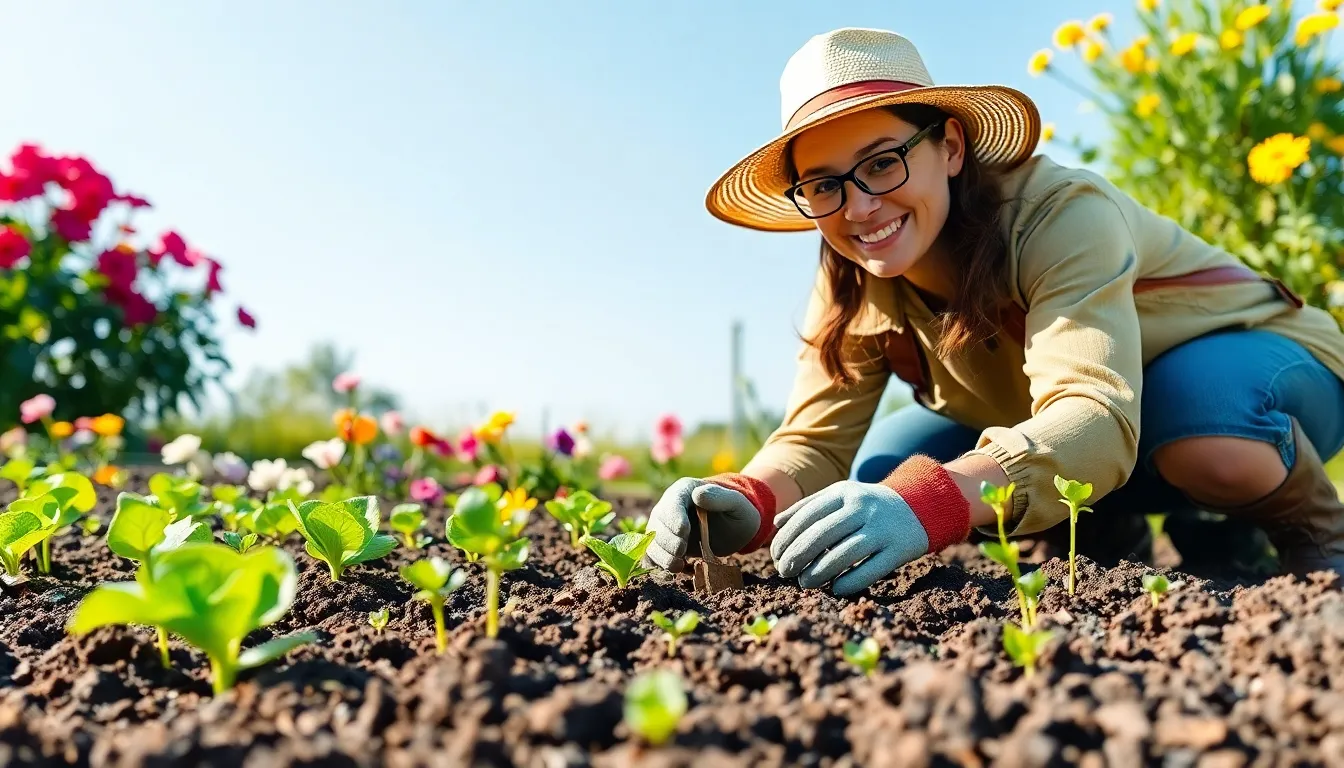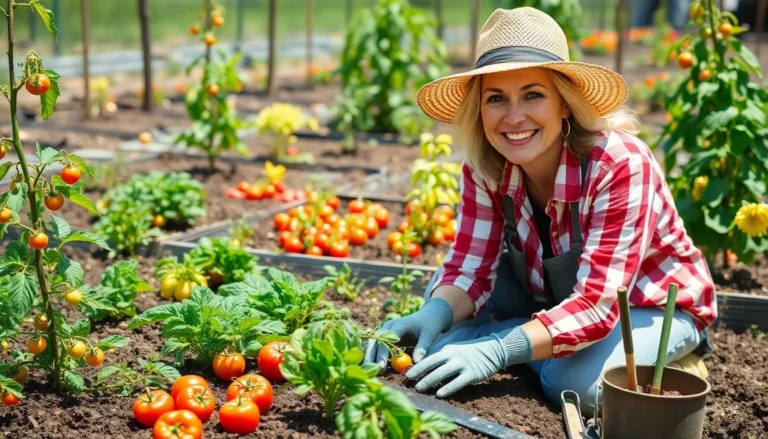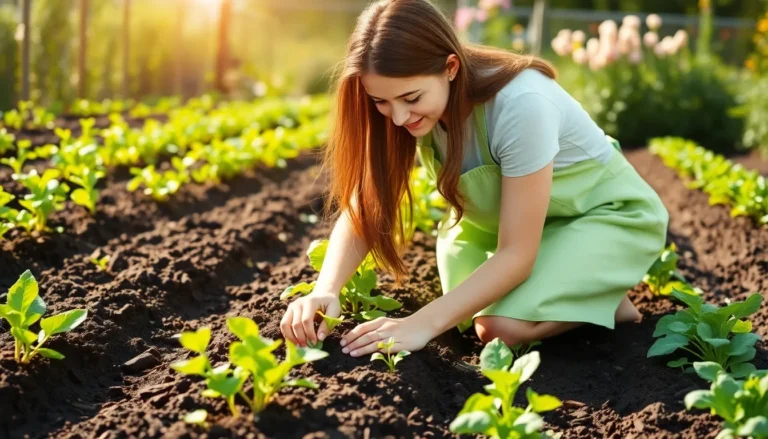Every seasoned gardener knows that timing is everything. Whether you’re dreaming of juicy tomatoes or vibrant flowers, the question looms: when’s the best time to start a garden? It’s like trying to find the perfect moment to binge-watch your favorite series—too early and you’re left hanging, too late and you miss out on all the fun!
when is the best time to start a garden
Understanding your climate zone plays a crucial role in determining the best time to start a garden. Climate influences plant growth and selection, impacting overall garden success.
Types of Climate Zones
USDA Plant Hardiness Zones categorize regions based on average annual minimum temperatures. Zones range from 1 to 13, with 1 representing the coldest areas and 13 the warmest. For example, Zone 5 experiences winter temperatures as low as -20°F, while Zone 10 can reach lows of 30°F. Knowing these zones helps gardeners select suitable plants. For instance, tomatoes thrive in warmer zones, while certain perennials prefer cooler climates.
Determining Your Zone
Determining your specific climate zone is essential for gardening decisions. Gardeners can access the USDA Plant Hardiness Zone Map online for accurate zone information. Local gardening centers often provide insights into microclimates that may impact plant growth. Factors like elevation, proximity to water, and urban heat islands can influence local conditions. By assessing these factors, a gardener can make informed decisions about planting times and plant selections. This knowledge ultimately maximizes chances for successful gardening outcomes.
Seasonal Considerations

Timing impacts garden success. Understanding seasonal shifts helps optimize planting strategies.
Spring Gardening Tips
Spring marks the beginning of the gardening season. Start by preparing the soil when temperatures consistently reach 50°F. Select cool-season crops like lettuce and peas for early planting. Incorporating mulch assists in retaining moisture and regulating soil temperature. Monitoring frost dates ensures seedlings aren’t exposed to cold. Taking advantage of this season leads to healthy growth.
Fall Gardening Strategies
Fall offers a chance to prepare for the coming winter. Focus on planting cool-weather crops like kale and radishes that thrive in lower temperatures. Harvesting during this time enhances flavor due to cooler conditions. Amend soil with organic matter to enrich the earth and support future spring growth. Clearing away debris prevents disease and pest infestations while fostering a clean garden for winter. Proper planning in fall lays the groundwork for a successful garden next year.
Types of Plants and Their Needs
Understanding different plant types and their requirements is essential for successful gardening. Cool-season crops thrive in the spring and fall, flourishing in temperatures between 50°F and 70°F. Examples include lettuce, peas, spinach, and broccoli. Planting these varieties in early spring or late summer ensures optimal growth. Conversely, warm-season crops prefer the heat of summer, setting their best growth at temperatures above 70°F. Tomatoes, peppers, and zucchini fall into this category. These should be planted after the last frost of spring, maximizing their potential.
Perennial gardening timing focuses on the life cycle of perennial plants, which return year after year. Spring is the ideal time for planting perennials, allowing them to establish roots before hot weather. The dormant period during winter gives perennials a chance to rejuvenate. Some varieties, such as coneflowers and daylilies, provide extensive blooms while attracting pollinators. Fall also offers an opportunity for planting, as cooler temperatures encourage root development. Timing matters, particularly when aiming for long-term beauty in a garden.
Planning Your Garden
Planning a garden involves multiple steps that contribute to its success. Gardeners should prioritize soil preparation and plot layout for the best results.
Soil Preparation
Soil preparation forms the foundation of a thriving garden. Testing soil pH reveals its acidity, guiding the necessary amendments. Incorporating organic matter, such as compost, enhances soil fertility and structure. Tilling the soil breaks up compaction and improves aeration for root development. After amending, waiting a few weeks allows nutrients to integrate before planting. Moistening the soil ensures seeds take root effectively. Proper soil preparation promotes healthier plants and increases yield.
Plot Layout
Plot layout influences gardening efficiency and plant growth. Visualizing the garden design helps determine the optimal arrangement of plants. Spacing allows for airflow and light penetration, reducing disease risks. Grouping plants with similar watering needs conserves resources and simplifies maintenance. Using raised beds can improve drainage and soil warmth. Planning pathways allows easy access for care and harvesting. Thoughtful layout design ensures a productive and organized garden.
Conclusion
Timing is everything when it comes to gardening. By understanding climate zones and seasonal shifts, gardeners can make informed decisions that lead to thriving plants. Whether it’s preparing soil in spring or planting cool-weather crops in fall, each step plays a vital role in the garden’s success.
Planning and preparation set the stage for a flourishing garden. With the right knowledge and strategies, anyone can cultivate a beautiful and productive space. Embracing these insights will not only enhance the gardening experience but also yield rewarding results for years to come.




